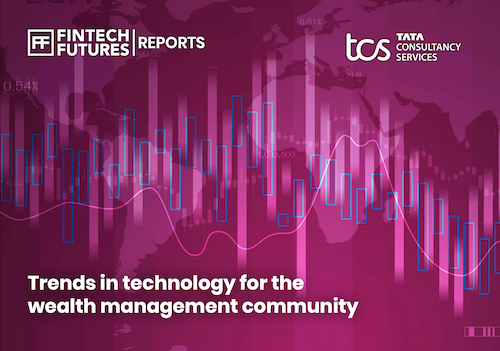Report: Trends in technology for the wealth management community
Free download!
The wealth management sector is rapidly evolving; the pace of change in terms of client expectations, service delivery, product offering, breadth of services and digitisation is breathtaking. Covid-19 was transformative for the industry, accelerating changes that were already in play, such as a digitised offering to allow for an omni-opti channel approach.

It accelerated the need to provide a tailored and personalised offering to meet individual customer needs and exceed expectations. Add to that thematic trends such as the “Great Wealth Transfer”, move to ESG and private markets, and against a backdrop of economic and geopolitical uncertainly, and wealth managers certainly have plenty to think about.
The role of technology in this mix cannot be underestimated – it serves to underpin and enhance wealth management offerings from any number of angles; is crucial in delivering the service customers expect; and in delivering insights to shape the strategic agenda.
Accordingly, our survey of wealth management executives revealed a host of priorities and focus points. The aim was to get a feel for what wealth managers are experiencing in terms of their technology situation, current limitations, priority areas and how the need to provide a better service level for the client and optimising the wealth manager’s time rely on solid technology tools.
The report reveals not only the survey responses but also puts them into context, thinking also about the impact of broader or underlying industry issues, competing priorities, budget, expertise and culture – now and in the future. Indeed, the overall impression was that all respondents are keenly aware of the need to provide high-quality and differentiated customer experience in terms of the actual service and investment proposition and the way that it is delivered.
To deliver on that, wealth managers need to have robust technology in terms of both the architecture and the software.
It is no surprise then that technology strategy centres around software to support the wealth manager’s front end and operations experience through enhancing data management and analytics capabilities. In terms of what wealth managers want to offer to the client themselves, digital channels, collaboration tools, rich UX, digital and hybrid offerings along with front office tooling are deemed essential and in high demand. If a customer cannot easily connect with the wealth manager, they are highly likely to go elsewhere. Indeed, collaboration tools and co-browsing capabilities are now a central part of the delivery of an enhanced client experience.
Underneath the delivery mechanisms, the investment requirements of wealth individuals are broad – they want to have access to the full spectrum of investment vehicles and expect to have regular communications as well as digital reporting in place. ESG in particular was discussed as something that all firms now need to offer, given its importance to the next generation of investors.
To that end, meeting not just the needs of today’s investors but also staying relevant into the future, wealth managers know that they need to invest in a robust architecture that will allow them to be flexible and deliver on product, service and delivery – now and in the future.
The “Trends in technology for the wealth management community” report is brought to you by FinTech Futures and TCS BaNCS












































